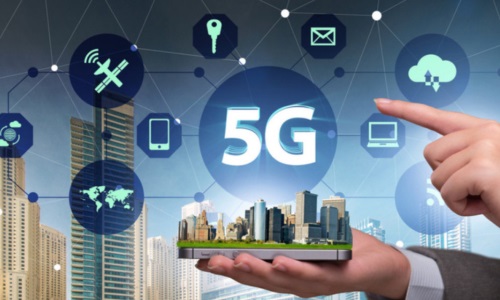
The integration of 5G technology with IoT (Internet of Things) devices is expected to revolutionize the way we live and work. 5G’s high-speed, low-latency, and massive connectivity capabilities make it an ideal platform for supporting a wide range of IoT devices and applications.
Benefits of 5G for IoT Devices – Increased Connectivity: 5G enables the connection of a vast number of devices, making it possible to create complex IoT ecosystems.







Low Latency: 5G’s ultra-low latency ensures real-time communication between devices, enabling applications that require instantaneous feedback.
High-Speed Data Transfer: 5G’s fast data transfer rates allow for the rapid exchange of large amounts of data, enabling applications such as video streaming and analytics.
Improved Security: 5G’s advanced security features, such as network slicing and edge computing, provide a secure environment for IoT devices to operate.
Enhanced Mobility: 5G’s support for mobility enables IoT devices to maintain connectivity while in motion, making it ideal for applications such as smart transportation and logistics.
IoT Devices Supported by 5G
Smart Home Devices: Thermostats, security cameras, and smart lighting systems can be connected and controlled remotely using 5G.
Wearables: Fitness trackers, smartwatches, and health monitors can transmit data in real-time, enabling personalized health and fitness advice.
Industrial Sensors: Sensors used in industrial settings, such as temperature and pressure sensors, can transmit data in real-time, enabling predictive maintenance and improved efficiency.
Autonomous Vehicles: 5G enables the connectivity and communication required for autonomous vehicles to operate safely and efficiently.
Smart City Infrastructure: 5G can support the connectivity of smart city infrastructure, such as traffic management systems, smart lighting, and waste management systems.
Applications of 5G in IoT
Smart Cities: 5G can enable the creation of smart cities by connecting and integrating various city infrastructure and services.
Industrial Automation: 5G can enable the automation of industrial processes, improving efficiency and reducing costs.
Transportation: 5G can enable the development of smart transportation systems, including autonomous vehicles and smart traffic management.
Healthcare: 5G can enable remote health monitoring and telemedicine, improving healthcare outcomes and reducing costs.
Agriculture: 5G can enable precision agriculture, enabling farmers to monitor and control their crops and livestock remotely.
Challenges and Limitations
Security: The increased connectivity of IoT devices using 5G also increases the risk of cyber attacks and data breaches.
Interoperability: The integration of different IoT devices and systems using 5G can be complex and require significant investment.
Cost: The cost of deploying and maintaining 5G infrastructure can be high, making it a barrier to adoption for some organizations.
Regulation: The regulation of 5G and IoT devices is still evolving and can vary by country and region.
In conclusion, 5G technology has the potential to revolutionize the IoT industry by enabling the connection of a vast number of devices, providing low latency and high-speed data transfer, and supporting a wide range of applications. However, there are also challenges and limitations that need to be addressed to ensure the successful adoption of 5G in IoT.


Leave a Reply